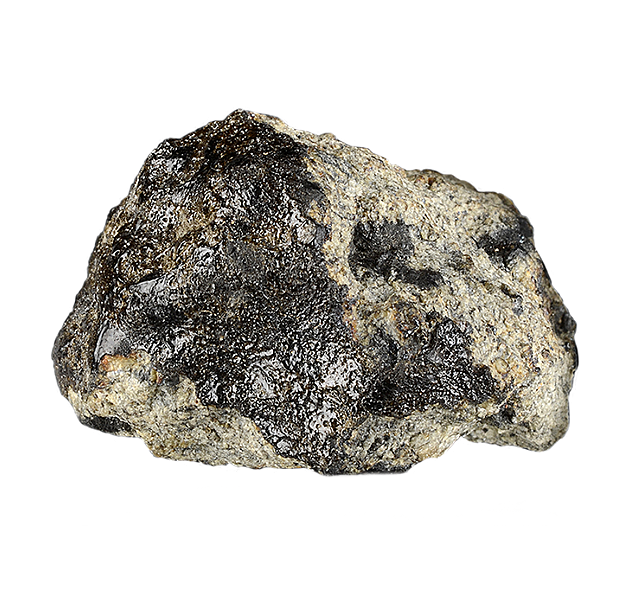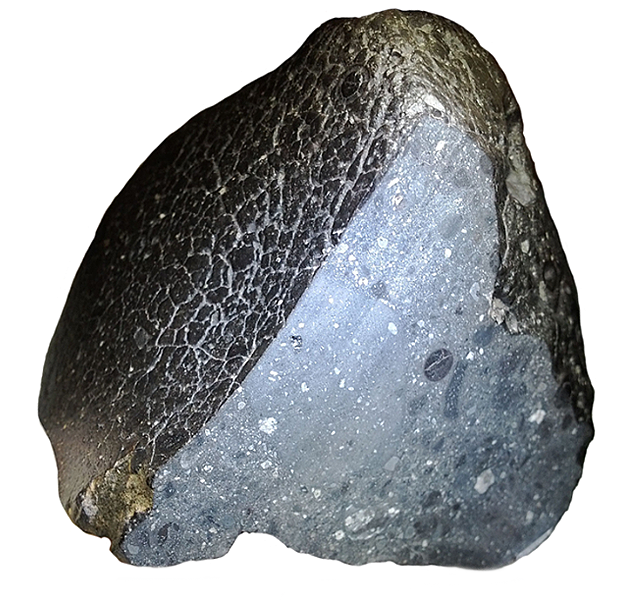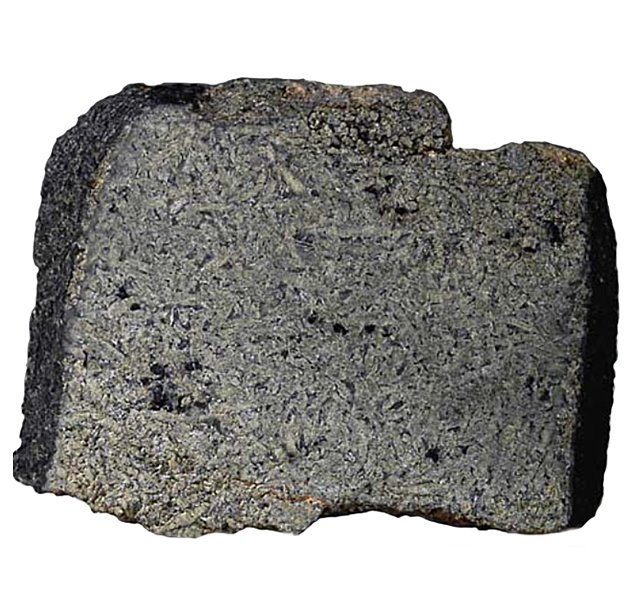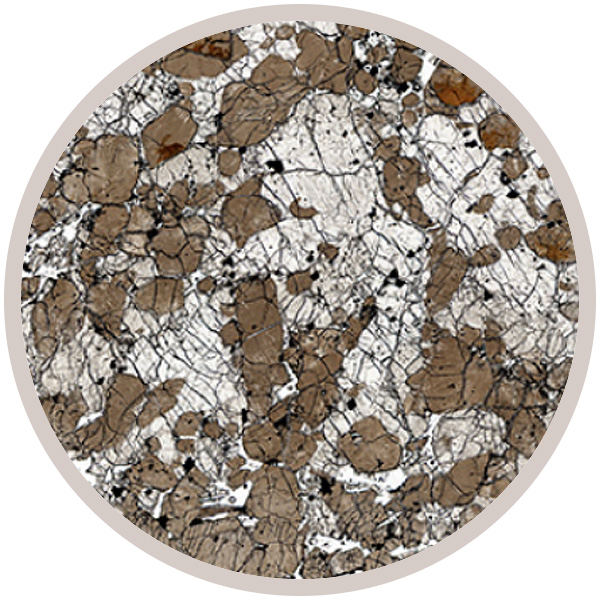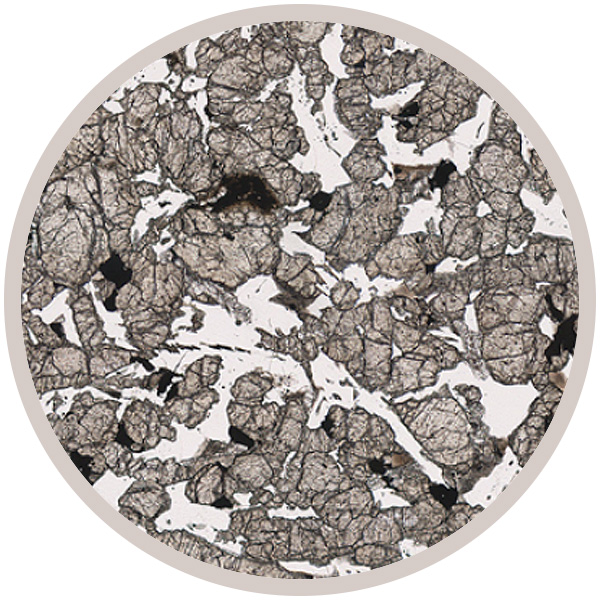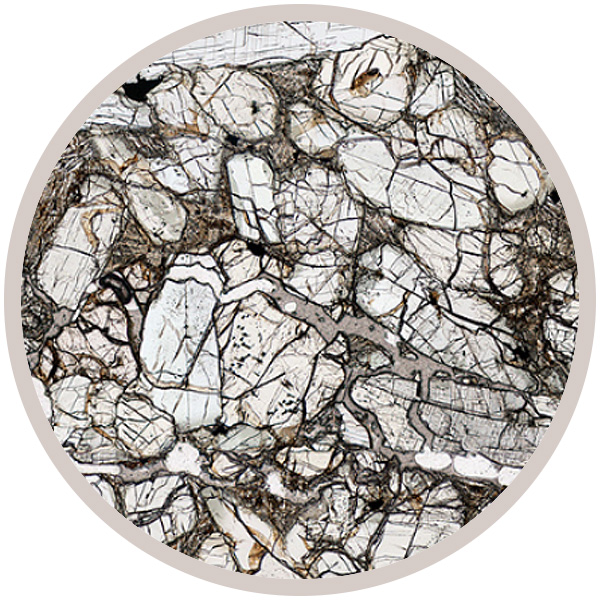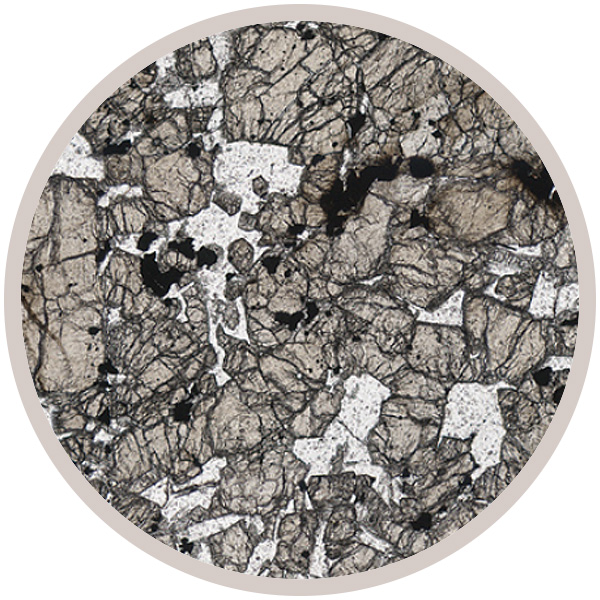
Fact sheet
Two identical pieces of basaltic shergotitte were found together in 2004 in the Roberts Massif of Antarctica. Oxygen isotopes indicate that they have a martian origin. Other isotopic techniques have produced a range of ages for the samples - 225 m.y. (Lu-Hf), 174 m.y. (Sm-Nd) and 167 m.y. (Rb-Sr).
About half the outer surface of the samples have a brown-black fusion crust. The interiors are tan-grey in colour with a sandy texture and low metal content.
The mineral assemblage is dominated by coarse-grained pyroxene (pigeonite) and olivine, with lesser abundances of augite, plagioclase feldspar (maskelynite), chromite, phosphate and sulphide. Shock melt veins and pockets are a feature of the samples.
This collection of meteorites includes Shergottites, Nakhlites and Chassignites (or SNC meteorites) which originate from the surface of the planet Mars.
They carry unique signals of the surface of the planet that allows scientists to study the composition and age of Martian rocks. The collection includes a sample of the famous ALH84001 meteorite, evidence from which was used in 1996 to begin the debate of 'life on Mars?'.

